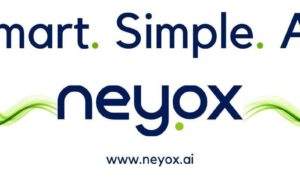In today’s competitive landscape, small businesses face the challenge of making a lasting impact with limited resources. The most effective marketing strategies combine the best of traditional and digital methods to create a comprehensive approach that maximises reach, engagement, and impact. This integration not only enhances the customer experience but also provides businesses with the flexibility to cater to diverse preferences and behaviours.
Bridging the Gap Between Online and Offline
Traditional marketing methods, such as direct mail, flyers, and promotional items, offer something that digital strategies often lack—tangibility. Receiving a physical product or message creates a more personal connection than a fleeting online ad. For instance, a branded notebook sent as part of a direct mail campaign serves as a constant physical reminder of your business. Unlike digital ads that disappear with a click, these tangible items linger in homes and offices, keeping your brand top-of-mind.
The key to bridging the gap between traditional and digital marketing lies in creating seamless transitions. Adding a QR code or your social media handles to a branded notebook invites recipients to engage further with your online platforms. Whether it’s visiting your website, following your social media profiles, or redeeming an exclusive offer, these touchpoints connect offline efforts with digital engagement, providing a cohesive brand experience.
Leveraging the Strengths of Each Channel
Every marketing channel has unique strengths. Digital marketing is unparalleled in its ability to target specific demographics, measure campaign performance, and reach a global audience. Social media platforms, email marketing, and paid search campaigns allow businesses to tailor their messages with precision and track the results in real-time.
On the other hand, traditional marketing excels in building trust, fostering personal connections, and providing lasting visibility. A well-placed billboard, an eye-catching flyer, or a branded notebook can leave a memorable impression on audiences who may be less active online. The physical nature of these methods ensures that your message isn’t easily forgotten.
By combining these strengths, small businesses can create a balanced strategy that captures the attention of both digitally savvy audiences and those who value traditional approaches. For example, a small bakery could use Instagram ads to promote a new product launch while distributing branded notebooks at local events to reinforce its presence in the community.
Enhancing Engagement with Promotional Items
Promotional products, such as branded notebooks, play a pivotal role in integrating traditional and digital marketing efforts. These items are more than just giveaways—they are tools for brand reinforcement and customer engagement. A thoughtfully designed notebook featuring your logo and contact information not only provides practical value but also serves as a daily reminder of your business.
When paired with digital efforts, promotional items amplify your message. For instance, including a QR code on the cover of a branded notebook could lead recipients to a landing page with exclusive content or discounts. Alternatively, a social media campaign encouraging customers to share photos of their branded notebooks could generate user-generated content and extend your reach.
Promotional items also foster emotional connections with your audience. People tend to value physical gifts, especially those that are functional and high-quality. By offering something as practical as a branded notebook, your business demonstrates care and professionalism, building goodwill and loyalty among customers.
Driving Consistency Across Channels
Consistency is the cornerstone of effective marketing. Whether your audience encounters your brand through a flyer, a social media post, or a branded notebook, the messaging, visuals, and tone should align. This cohesion ensures that your brand is easily recognisable and trustworthy, regardless of the medium.
Aligning traditional and digital marketing efforts starts with a clear understanding of your brand identity. Once established, this identity should be reflected across all channels. For instance, if your digital ads use a specific colour scheme and tone of voice, these elements should also be present in your printed materials and promotional items. This unified approach reinforces your brand’s personality and ensures a seamless customer experience.
Measuring the Impact of Integration
One of the advantages of digital marketing is the ability to measure results with precision. However, this doesn’t mean traditional methods are unmeasurable. By incorporating trackable elements, such as unique QR codes or discount codes on promotional items, businesses can assess the effectiveness of their traditional campaigns. For example, tracking how many people scan the QR code on a branded notebook can provide valuable insights into its impact.
Customer feedback is another valuable tool for gauging the success of your integrated strategy. Surveys, online reviews, and direct interactions can reveal how customers perceive your brand across different touchpoints. Use this feedback to refine your approach and ensure that your traditional and digital efforts complement each other effectively.
The Benefits of an Integrated Approach
By combining traditional and digital marketing, small businesses can enjoy a range of benefits. This approach allows for greater flexibility in reaching diverse audiences, improves customer engagement through multiple touchpoints, and creates a more memorable brand presence. It also ensures that businesses are not overly reliant on a single channel, reducing the risk of missed opportunities.
Promotional items like branded notebooks exemplify the power of integration. These items provide a tangible connection to your brand while encouraging digital engagement. Whether used as part of a direct mail campaign, handed out at events, or included in customer orders, they offer a versatile and impactful way to bridge the gap between online and offline marketing.
Conclusion
In an increasingly digital world, the value of traditional marketing should not be underestimated. By integrating traditional and digital methods, small businesses can create a comprehensive strategy that leverages the strengths of both approaches. Promotional items like branded notebooks serve as a powerful tool in this integration, offering practical value while reinforcing your brand identity.
As small businesses navigate the complexities of modern marketing, embracing an integrated approach ensures they remain competitive, memorable, and effective. By bridging the gap between online and offline efforts, businesses can build stronger connections with their audiences and achieve sustainable growth.






























